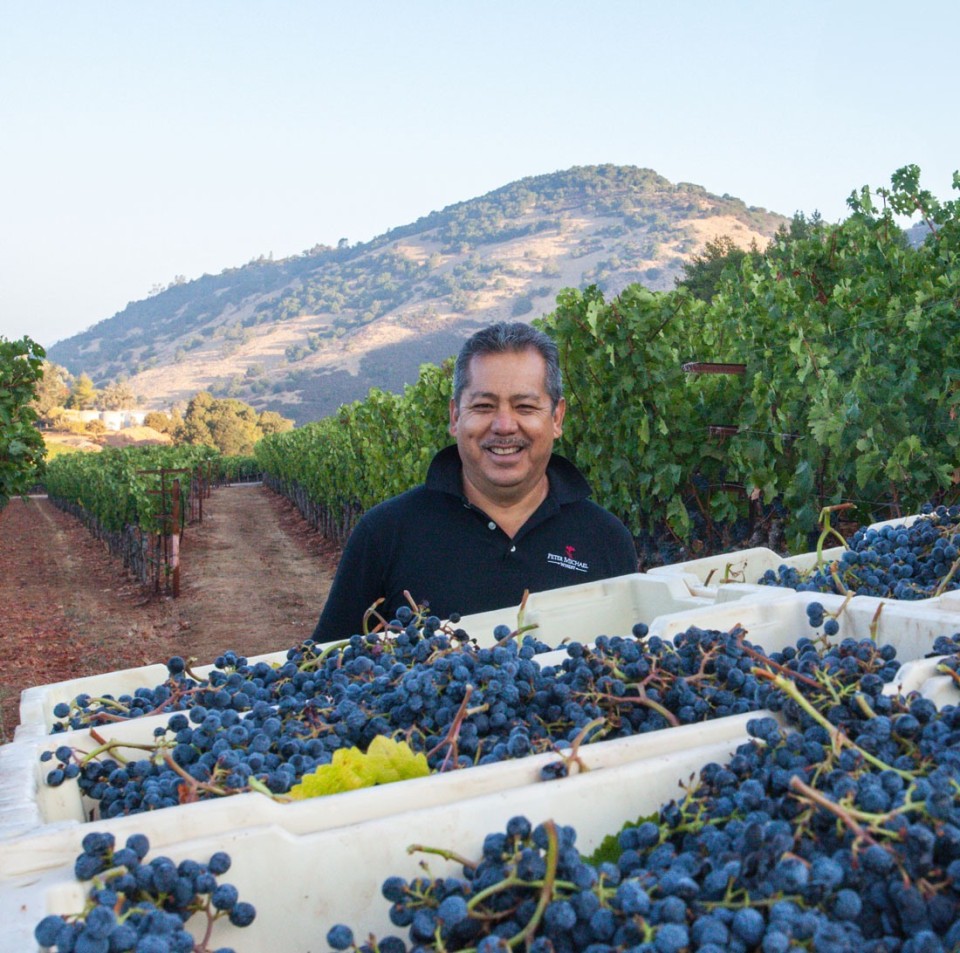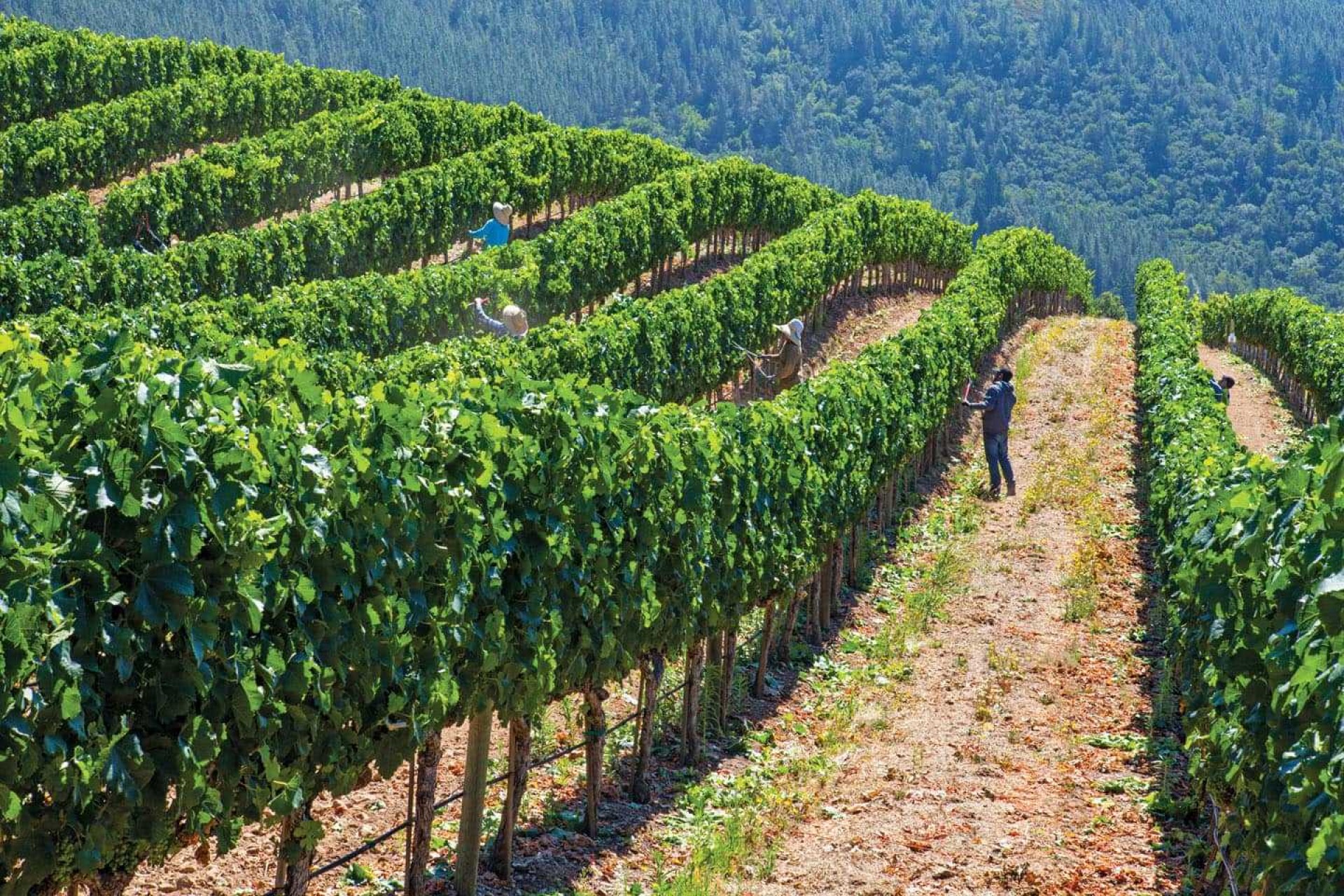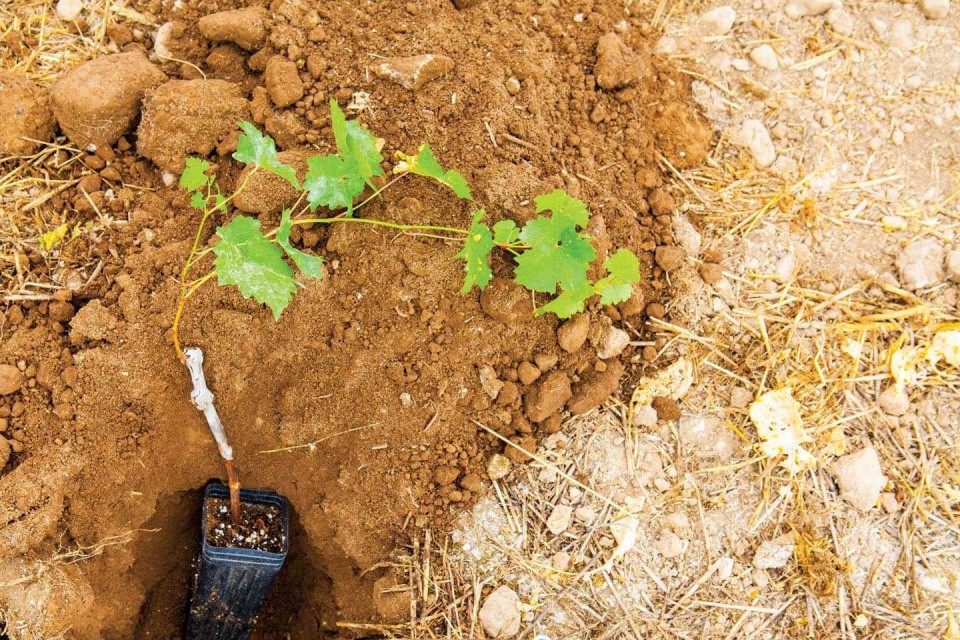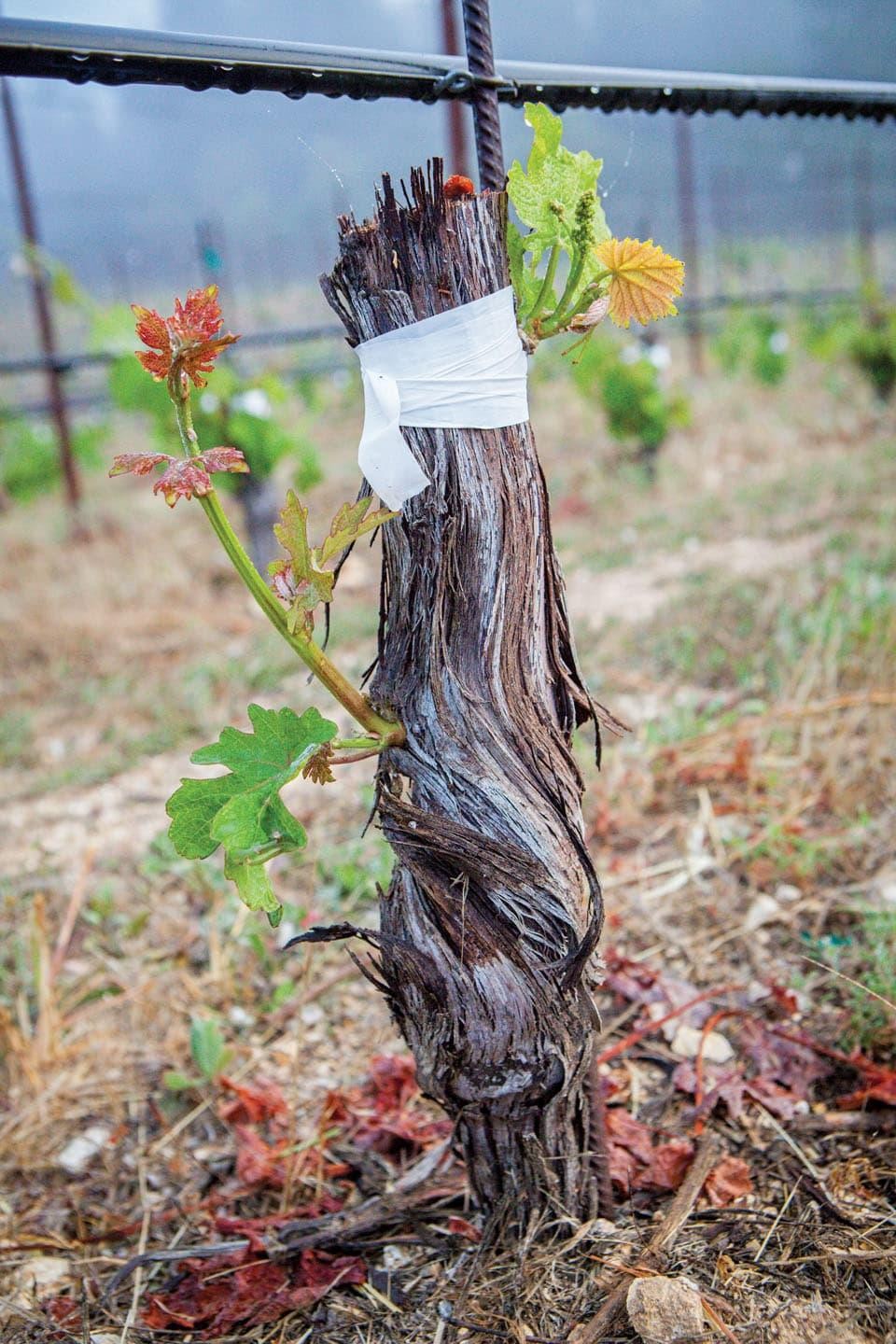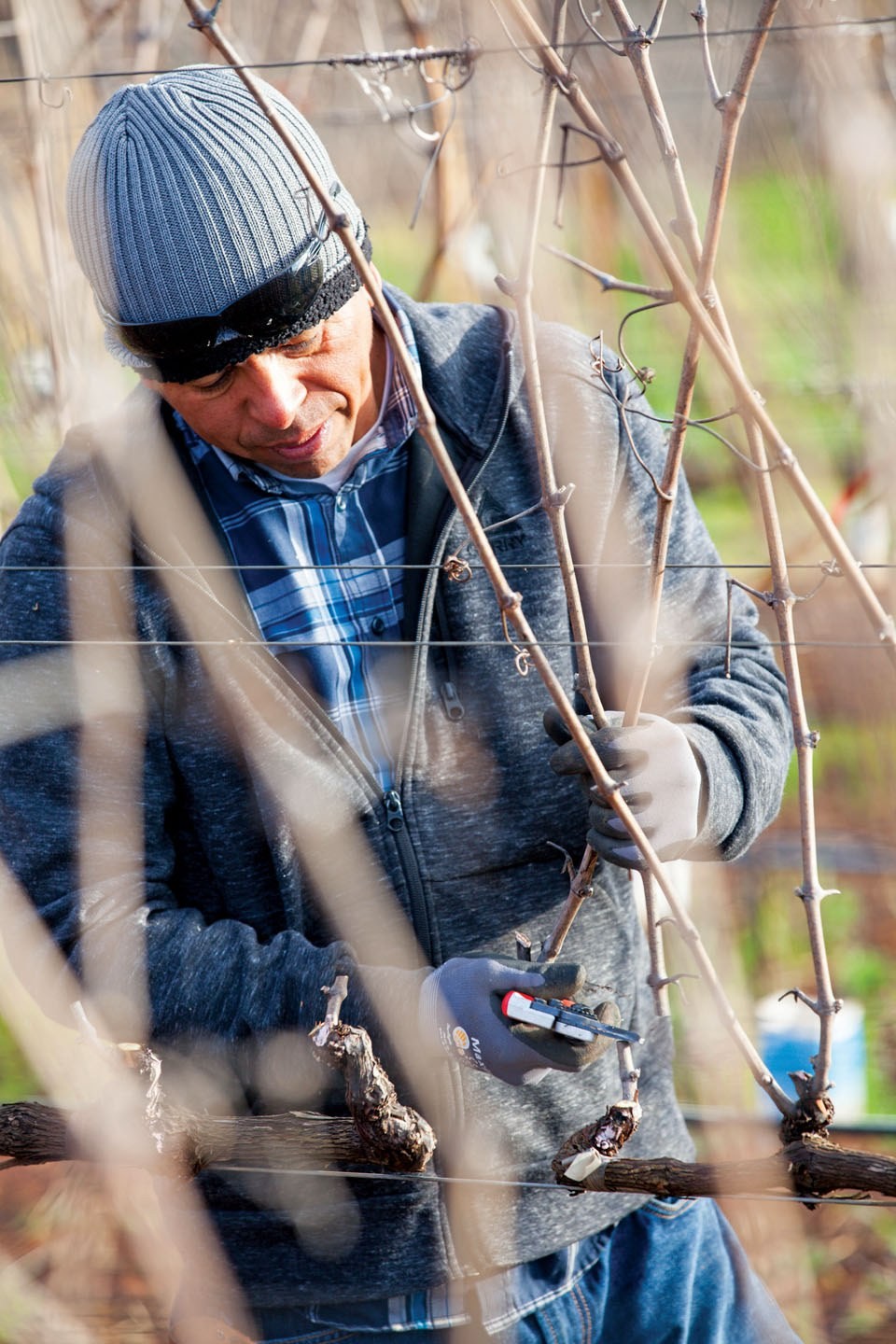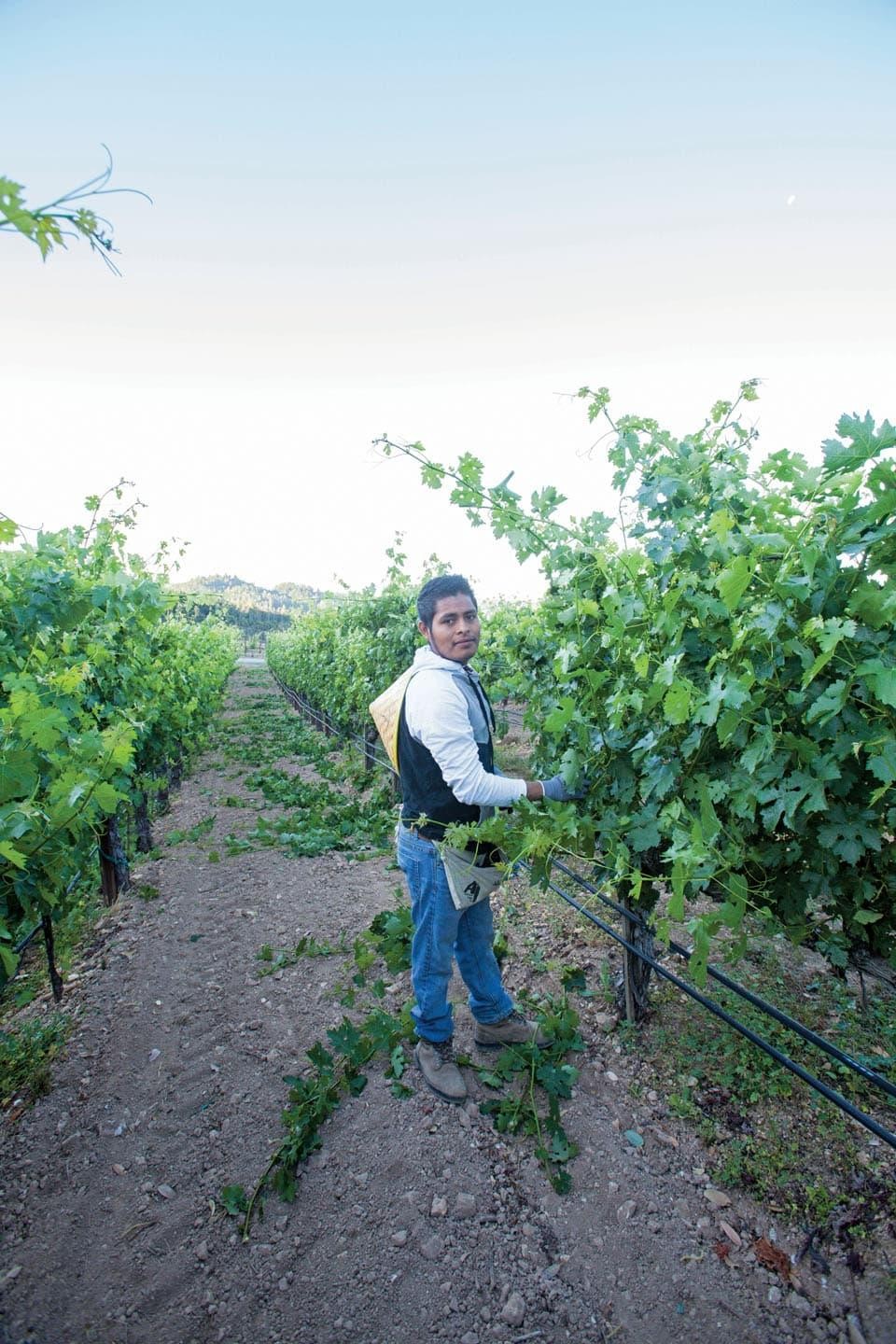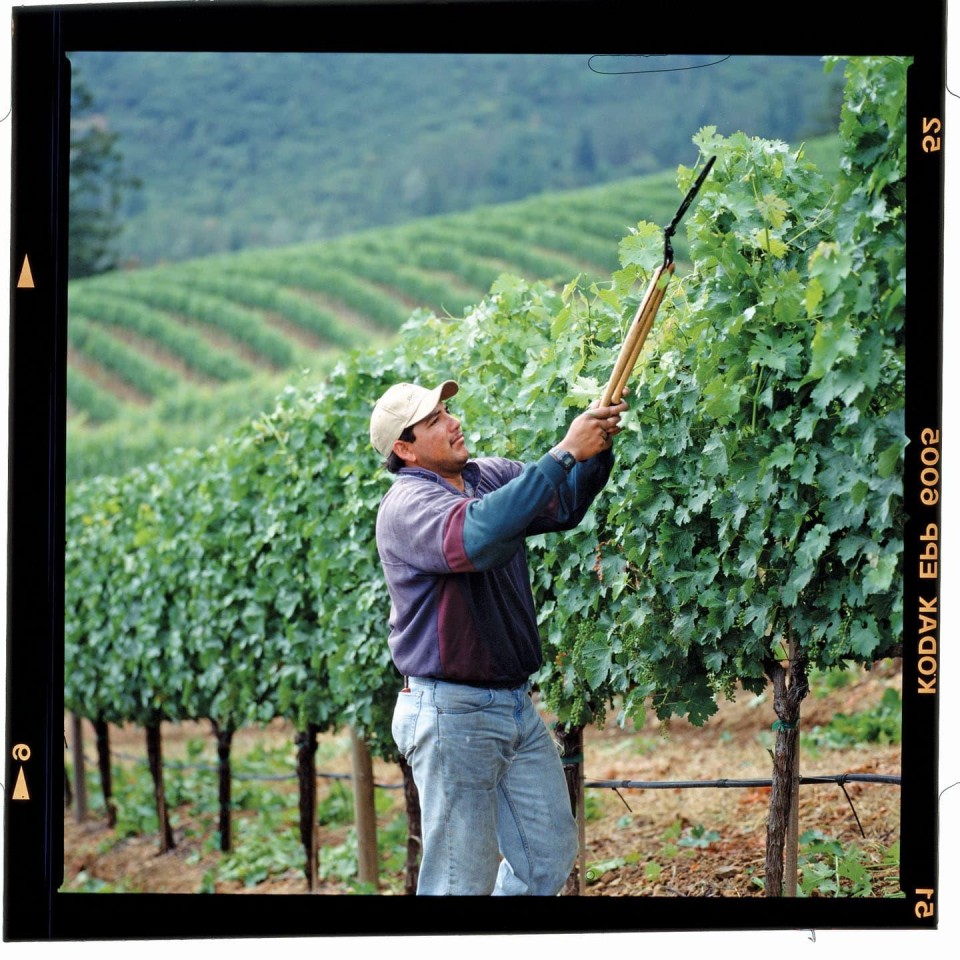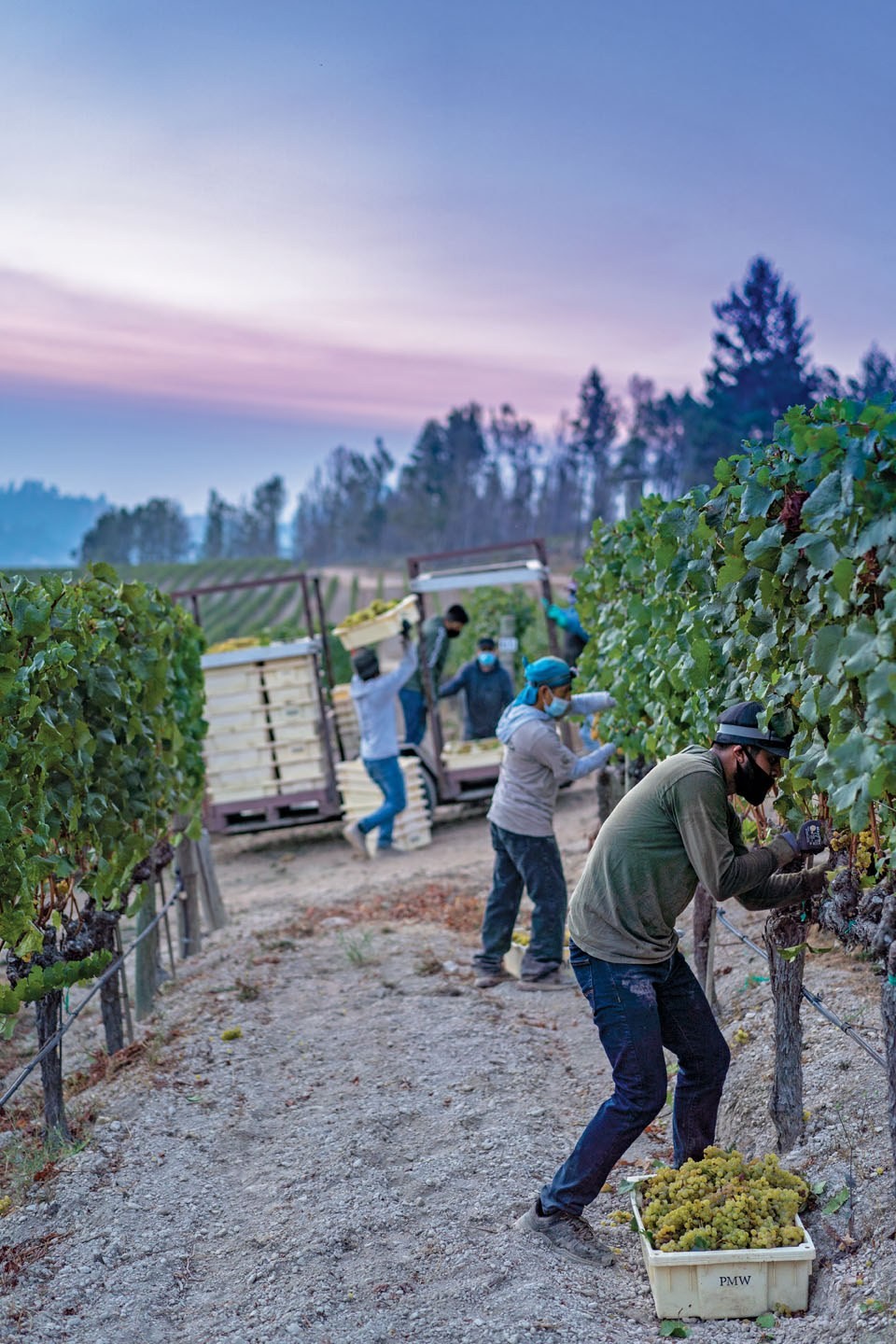Much of all of this is achieved through pruning, a crucial process that sets the stage for attaining balance in the vines and maintaining the well-being of the vineyard. Therefore, Aviña chooses only the most experienced members of his crew to perform this precise task. “They need to have at least two years of experience with the team, preferably with pruning specifically. Whenever we start to prune, I spend as much time as possible with the pruning crews to make sure they understand the technique and philosophy. It is important that they make correct decisions, select the best positions, with the buds pointing in the same direction, and that they’re making precise cuts.”
When his crew is implementing shoot positioning, Aviña says he watches the first pass very closely, because “this is when the shoots are most flexible, but also are the most sensitive to damage. Mistakes made during this pass will reflect and magnify throughout the rest of the growing year. This is a critical step in guiding the plant in the correct way and helps prevent us from having to make drastic changes in subsequent passes, allowing the plant to grow actively and without damage.”
An intuitive farmer, Aviña prefers performing his viticultural duties by hand, without the assistance of machines, and demands the same from his crew. “We do all the hedging by hand, using shears—no mechanical trimming. This is hard and tiring work for the crew, but I believe the result is the best for the success of the vineyard. Mechanical trimming can damage or harm the tissue, leaving potential for disease. This can also impact the canopy. When hedging, I always watch that the cuts are clean—no bent or smashed shoots—and that the resulting canopy is uniform throughout the vineyard block. We look for a canopy height of 40 to 46 inches, depending on the vineyard block and varietal.”
With an even and well-managed canopy, the grower can be assured the grape clusters will receive the right amount of sunlight and air circulation right up until harvest time. Still, Aviña sometimes instructs his crew to remove clusters that may be too far behind in ripening or that look as though they may not fully ripen. “When making a pass to thin the clusters, anything that was late to veraison [the onset of ripening] is removed. This allows the vine to concentrate on the clusters that are on time and to continue ripening evenly. We make sure not to disturb the clusters we leave, and that we cleanly remove anything we cut.”
